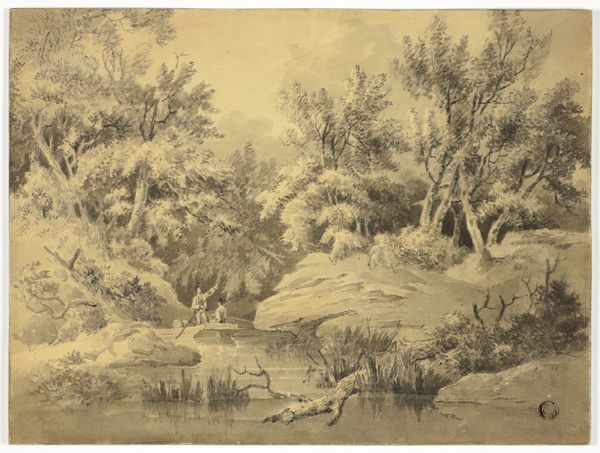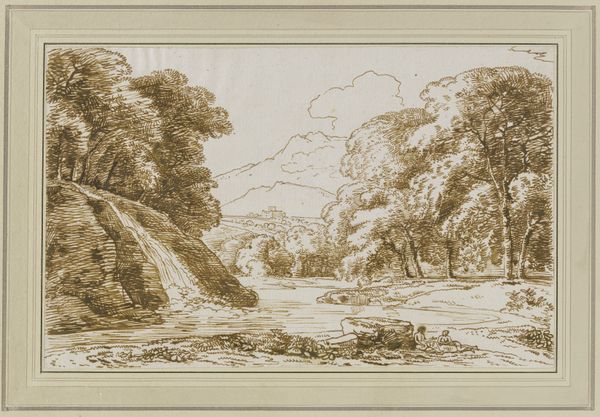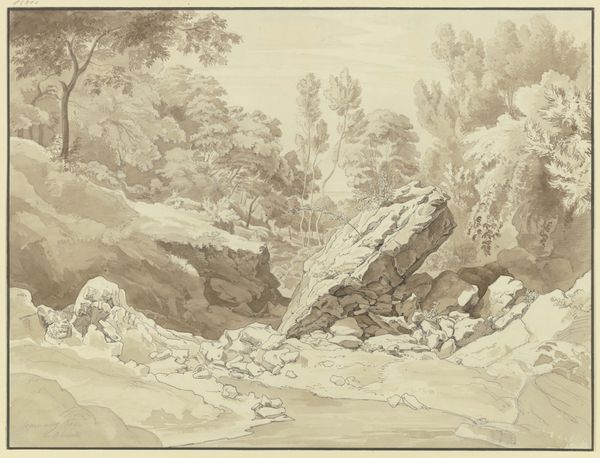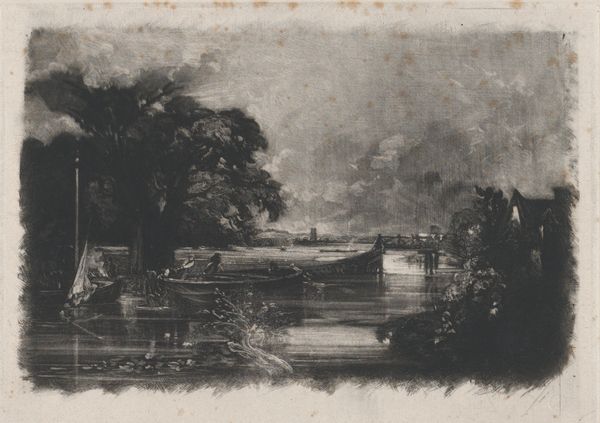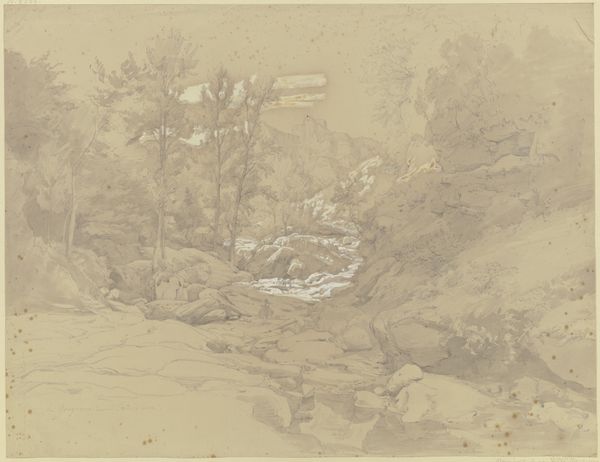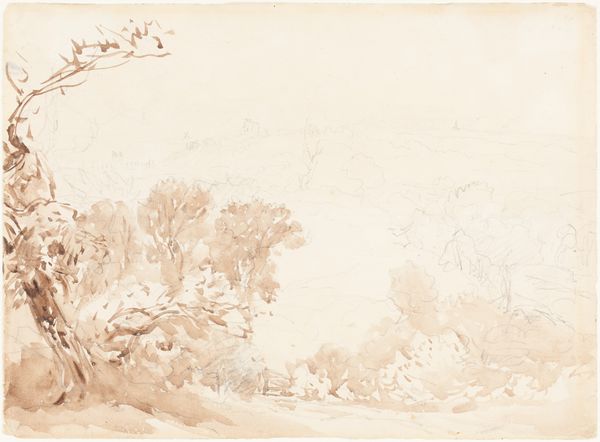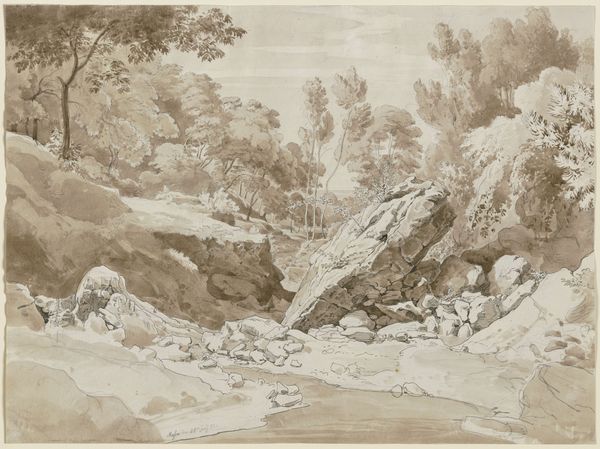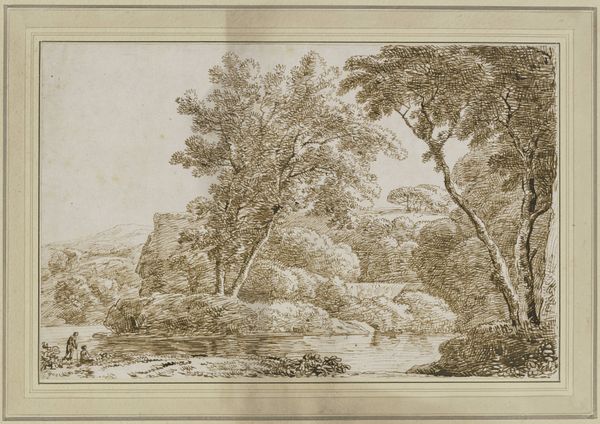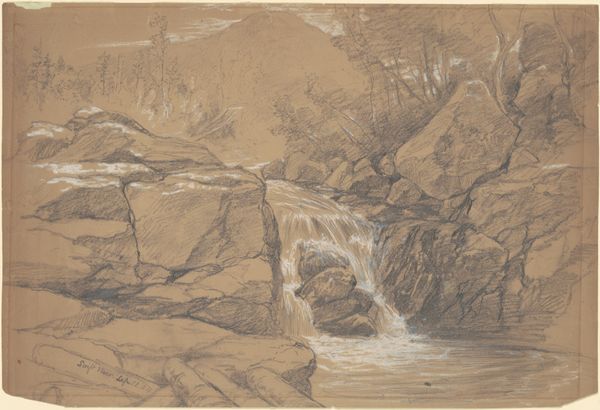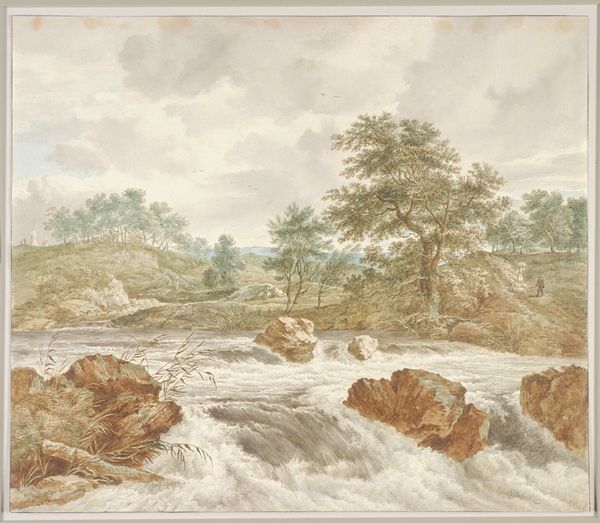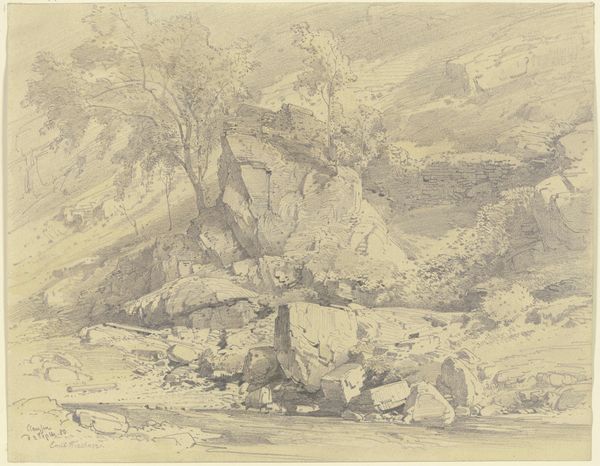
drawing, plein-air, ink, pencil
#
drawing
#
plein-air
#
pencil sketch
#
landscape
#
etching
#
ink
#
romanticism
#
pencil
Dimensions: overall: 28 x 36.5 cm (11 x 14 3/8 in.)
Copyright: National Gallery of Art: CC0 1.0
Editor: This is James Bulwer’s "Bridge Near Waters-Meet, Lynton, North Devon," likely from the 19th century. It seems to be an ink and pencil drawing. The way Bulwer uses delicate lines gives it an almost dreamlike, serene quality. What stands out to you in terms of the artistic technique? Curator: Consider first the composition: The bridge is centrally positioned, yet the eye is drawn in multiple directions by the organic shapes surrounding it. See how the gradations of tone—achieved through varying densities of line—create spatial depth. Notice how the limited tonal range contributes to the sense of unified visual experience. Does the interplay of light and shadow appear significant? Editor: Yes, definitely. The artist really used shadow to create contrast. But is there something to the way Bulwer has controlled the marks to show the overall aesthetic in this work? Curator: Note how the artist's hand controls the ink and pencil. The structural relationships within the drawing is remarkable because it shows us this attention to the way line defines form and space in landscape drawings. Consider how Bulwer's selection of drawing materials accentuates this formal construction. Editor: That makes me appreciate the technical skill more. It is more than just a pretty landscape; it is a demonstration of how technique can really define a piece. Curator: Precisely! Close inspection unveils the foundational formal decisions that shape the viewer’s aesthetic experience. This examination shows the structure more than the image. Editor: Thanks! I am taking a different view of formal structures now.
Comments
No comments
Be the first to comment and join the conversation on the ultimate creative platform.
